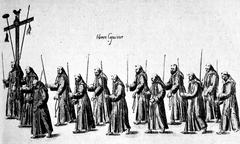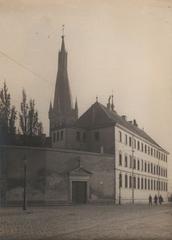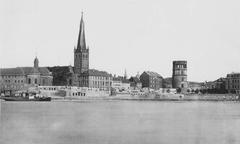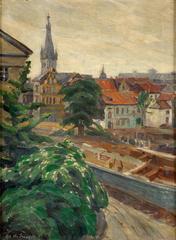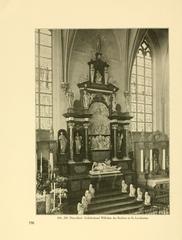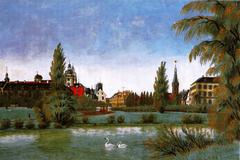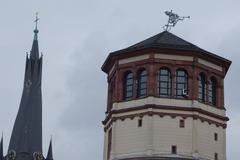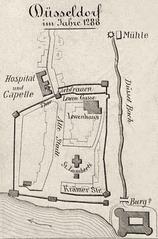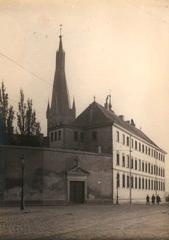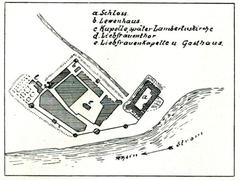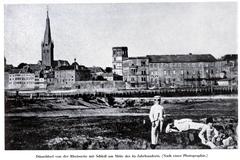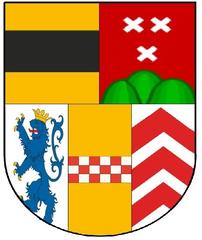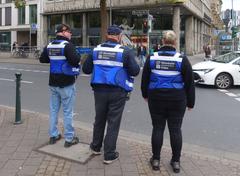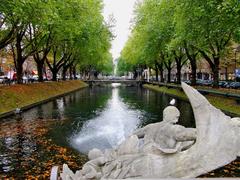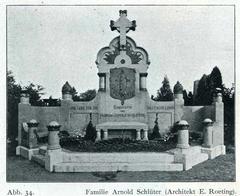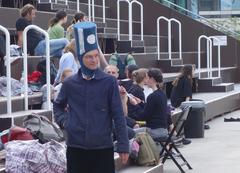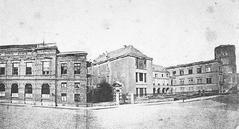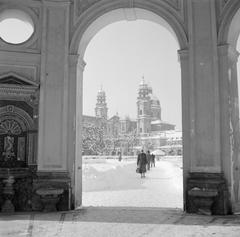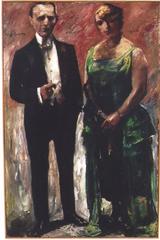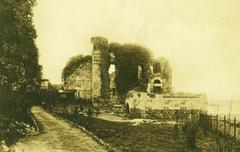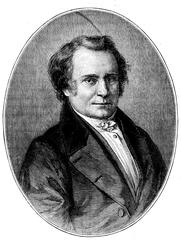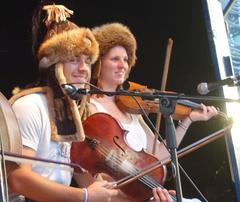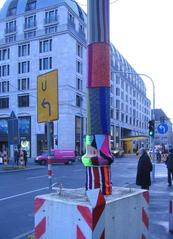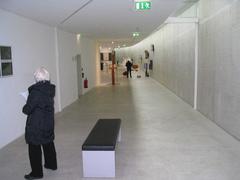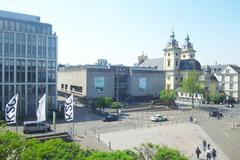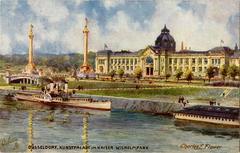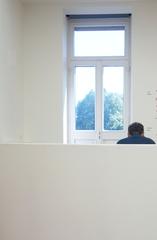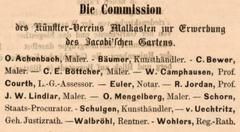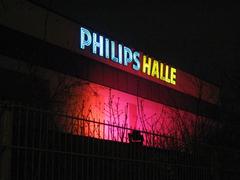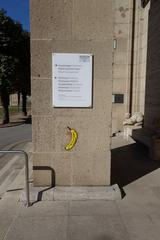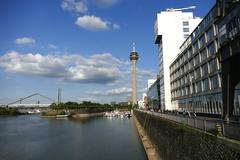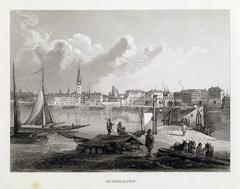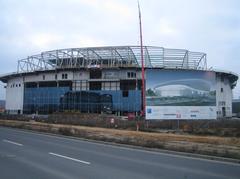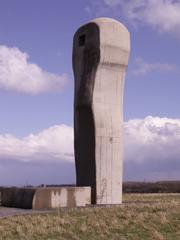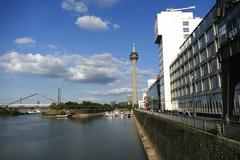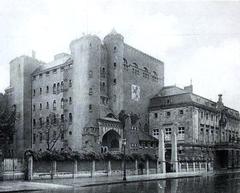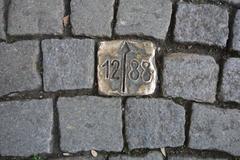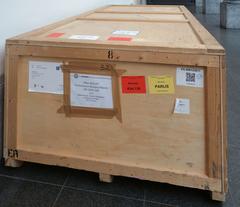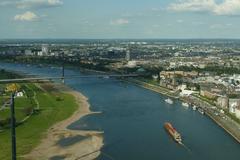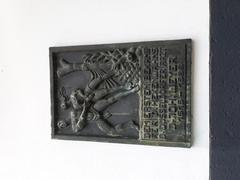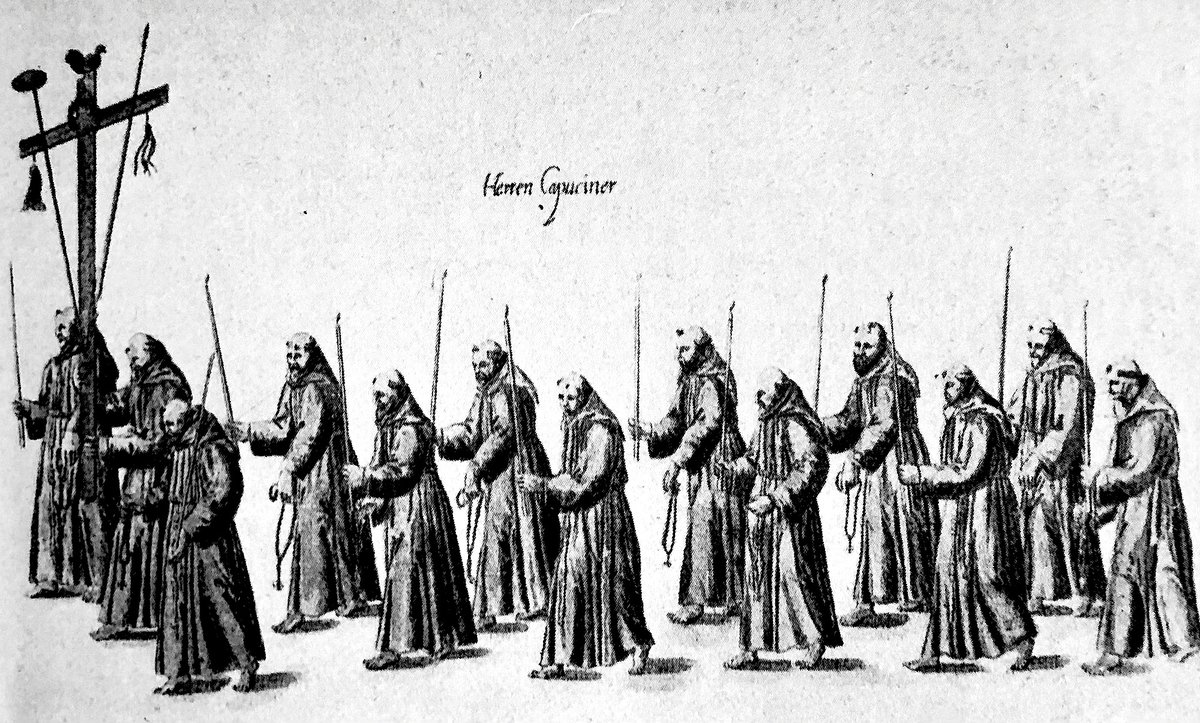
St. Lambertus Düsseldorf: Visiting Hours, Tickets, and Historical Site Guide
Date: 15/06/2025
Introduction: The Timeless Allure of St. Lambertus
Situated in the heart of Düsseldorf’s Altstadt, St. Lambertus Basilica stands as a testament to the city’s layered history and enduring spiritual life. Its origins in the early 13th century coincide with Düsseldorf’s rise from a small riverside settlement to a bustling modern metropolis. Dedicated to St. Lambert of Maastricht, the basilica has long been a focal point for religious devotion, architectural innovation, and civic pride, making it an essential destination for both locals and visitors (Spotting History; Germany Travel Blog).
The church’s unique twisted spire—a result of 19th-century reconstruction with unseasoned timber—has become an iconic feature of Düsseldorf’s skyline. St. Lambertus is not only a place of worship but also a vibrant cultural venue, hosting concerts, ceremonies, and community events. This guide offers a comprehensive look at St. Lambertus, including its history, visiting hours, ticket details, architectural highlights, and travel tips.
Contents
- Origins and Early History
- Architectural Evolution and the Twisted Spire
- Religious and Civic Significance
- Visitor Information: Hours, Tickets, and Accessibility
- Travel Tips and Nearby Attractions
- Architectural and Artistic Highlights
- Legends, War, and Restoration
- Events and Community Life
- Frequently Asked Questions (FAQ)
- Further Exploration: Düsseldorf’s Historical Sites
- Conclusion and Visitor Resources
Origins and Early History
St. Lambertus traces its roots to 1206, established as a Romanesque parish church during Düsseldorf’s formative years (Spotting History). The church’s growth mirrored the city’s ascent, especially after the Battle of Worringen in 1288, which granted Düsseldorf independence and city status. Over time, the church was expanded and re-consecrated, becoming a Gothic basilica and a symbol of both spiritual and civic identity.
Architectural Evolution and the Twisted Spire
Medieval to Renaissance Transformations
Originally Romanesque, St. Lambertus underwent Gothic-style expansion between 1288 and 1394, introducing pointed arches, ribbed vaults, and a soaring nave. The Renaissance saw the addition of the elaborate tomb of Duke Wilhelm V, reflecting the basilica’s role as a collegiate church and center for religious scholarship (Spotting History).
The Twisted Spire: Legend and Engineering
A defining feature is the church’s twisted spire, reconstructed after a devastating fire in 1815. The use of green timber caused the spire to warp as it dried—an architectural quirk now beloved by locals (Life in Düsseldorf). Folklore attributes the twist to the Devil’s wrath, with tales claiming the spire will only straighten when a virgin marries inside the church (Life in Düsseldorf). After World War II, the city insisted the spire be rebuilt with its distinctive twist, cementing its place as a symbol of Düsseldorf’s resilience.
Religious and Civic Significance
Spiritual Center and Pilgrimage Site
As the main Catholic church of Düsseldorf, St. Lambertus has served generations through baptisms, weddings, funerals, and daily masses. The church houses relics of both St. Lambert and St. Apollinaris, making it a pilgrimage destination, especially during feast days (Life in Düsseldorf; Explorial).
Civic and Cultural Hub
St. Lambertus is central to many city traditions, such as the annual Corpus Christi procession (Lambertus Pfarre). The basilica’s acoustics and grand organ have made it a renowned venue for sacred music, including the long-running “Internationale Orgelkonzerte an der Basilika St. Lambertus” (Lambertusmusik Düsseldorf).
Visitor Information: Hours, Tickets, and Accessibility
- Opening Hours: Typically open Monday to Saturday, 9:00 AM–5:00 PM; Sunday, 1:00 PM–5:00 PM. Hours may differ on holidays and for special events. Check the official site for updates.
- Admission: Free of charge; donations are encouraged for ongoing preservation.
- Accessibility: Main entrance and nave are wheelchair accessible. Some side chapels and crypts may have steps or uneven flooring due to the building’s age.
- Location: Lambertusplatz 1, Düsseldorf Altstadt. Easily reached by tram, subway, and on foot. Public parking is limited; nearby garages are available.
Travel Tips and Nearby Attractions
- Best Times to Visit: Early mornings or late afternoons for a quieter experience.
- Dress Code: Modest attire is recommended, especially during services.
- Guided Tours: Available in multiple languages; contact the parish or local tourism office for details (travelsetu.com).
- Nearby Sights: Altstadt attractions such as Burgplatz, Rhine Promenade, Kunstsammlung Nordrhein-Westfalen, and Düsseldorf’s famed Altbier breweries (thecrazytourist.com).
Architectural and Artistic Highlights
- Twisted Spire: The most recognizable feature, visible across the city.
- Interior Artworks: 15th-century frescoes, Renaissance memorials, and stained-glass windows by Vinzens Pieper and Ludwig Baur.
- Altars and Relics: 15th-century tabernacle and gilded reliquaries of St. Lambert and St. Apollinaris.
- Organs and Bells: The 1999 Rieger organ and a seven-bell carillon chime the melody “Christ ist erstanden” (Lambertusmusik Düsseldorf).
Legends, War, and Restoration
- Fire of 1815 and Joseph Wimmer: The spire’s 1815 fire threatened the church’s destruction, but locksmith Joseph Wimmer heroically helped contain the blaze, earning citywide recognition (Life in Düsseldorf).
- War Damage and Postwar Restoration: Damaged during WWII, the church underwent careful restoration, including the intentional recreation of the twisted spire (Life in Düsseldorf).
- Myths and Urban Legends: Tales of the Devil twisting the spire add to St. Lambertus’s mystique and popularity with visitors (Life in Düsseldorf).
Events and Community Life
St. Lambertus is a hub for musical concerts, religious festivals, and art exhibitions, particularly active during liturgical seasons and citywide events. The church’s calendar is regularly updated on the parish website.
Frequently Asked Questions (FAQ)
Q: What are the visiting hours?
A: Typically Monday–Saturday, 9:00 AM–5:00 PM; Sunday, 1:00 PM–5:00 PM. Check the official site for updates.
Q: Is there an entrance fee?
A: No, entry is free. Donations are welcome.
Q: Are guided tours available?
A: Yes, tours are available in several languages and can be booked via the parish or tourism office.
Q: Is the church wheelchair accessible?
A: The main nave is accessible; some areas may have steps or uneven flooring.
Q: Can I take photos inside?
A: Yes, discreet photography is permitted, but avoid flash and respect the sanctity during services.
Further Exploration: Düsseldorf’s Historical Sites
St. Lambertus’s location in the Altstadt makes it a perfect starting point for visiting other landmarks:
Conclusion and Visitor Resources
St. Lambertus Basilica is a cornerstone of Düsseldorf’s identity, celebrated for its architectural marvels, spiritual significance, and role in community life. Admission is free, the basilica is accessible, and its location offers rich opportunities to explore the city’s historic and cultural landscape. For the latest information on tours, events, and accessibility, consult the official parish website or download the Audiala app for audio guides and real-time updates.
Plan your visit, immerse yourself in centuries of tradition, and experience the living heart of Düsseldorf at St. Lambertus Basilica.
